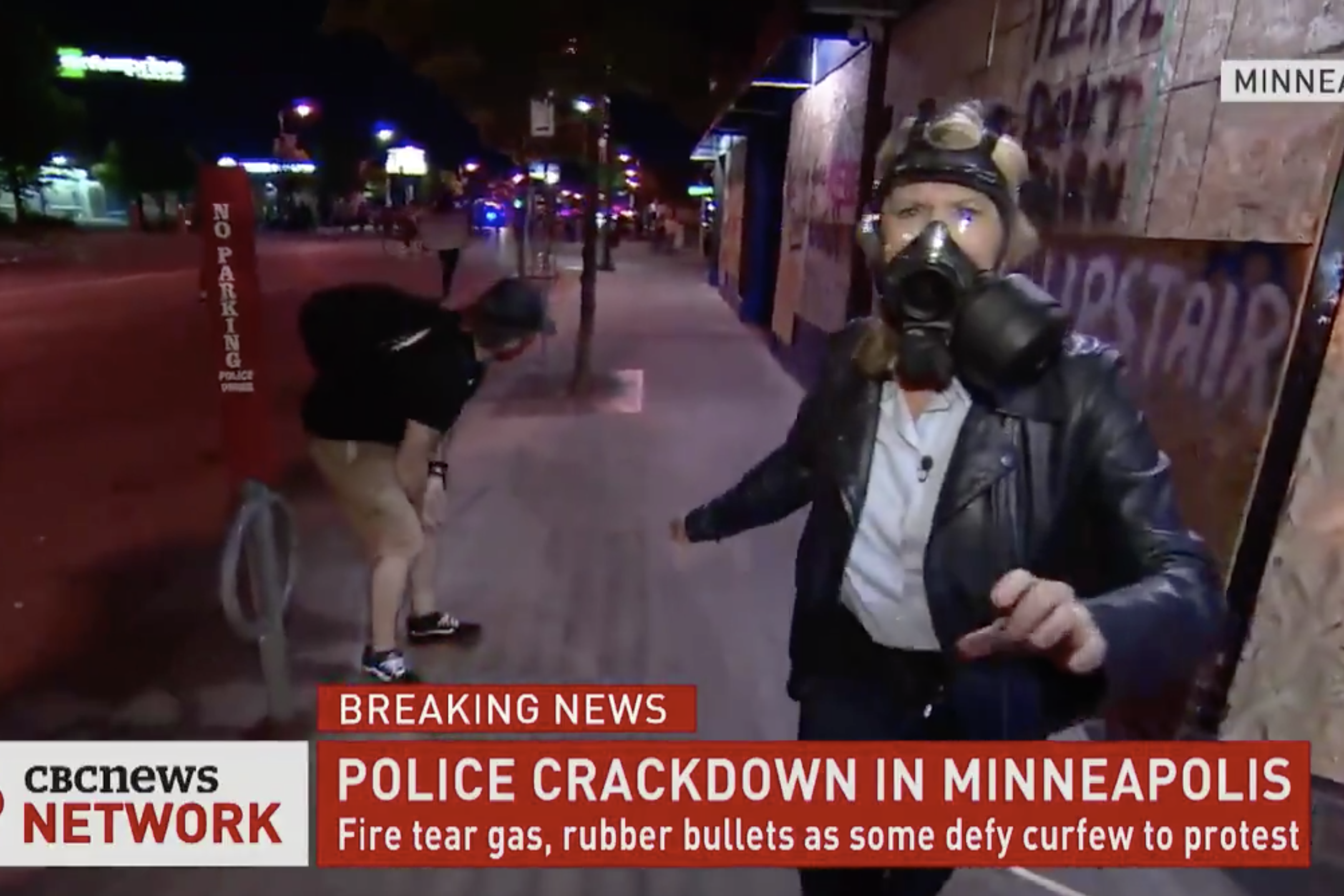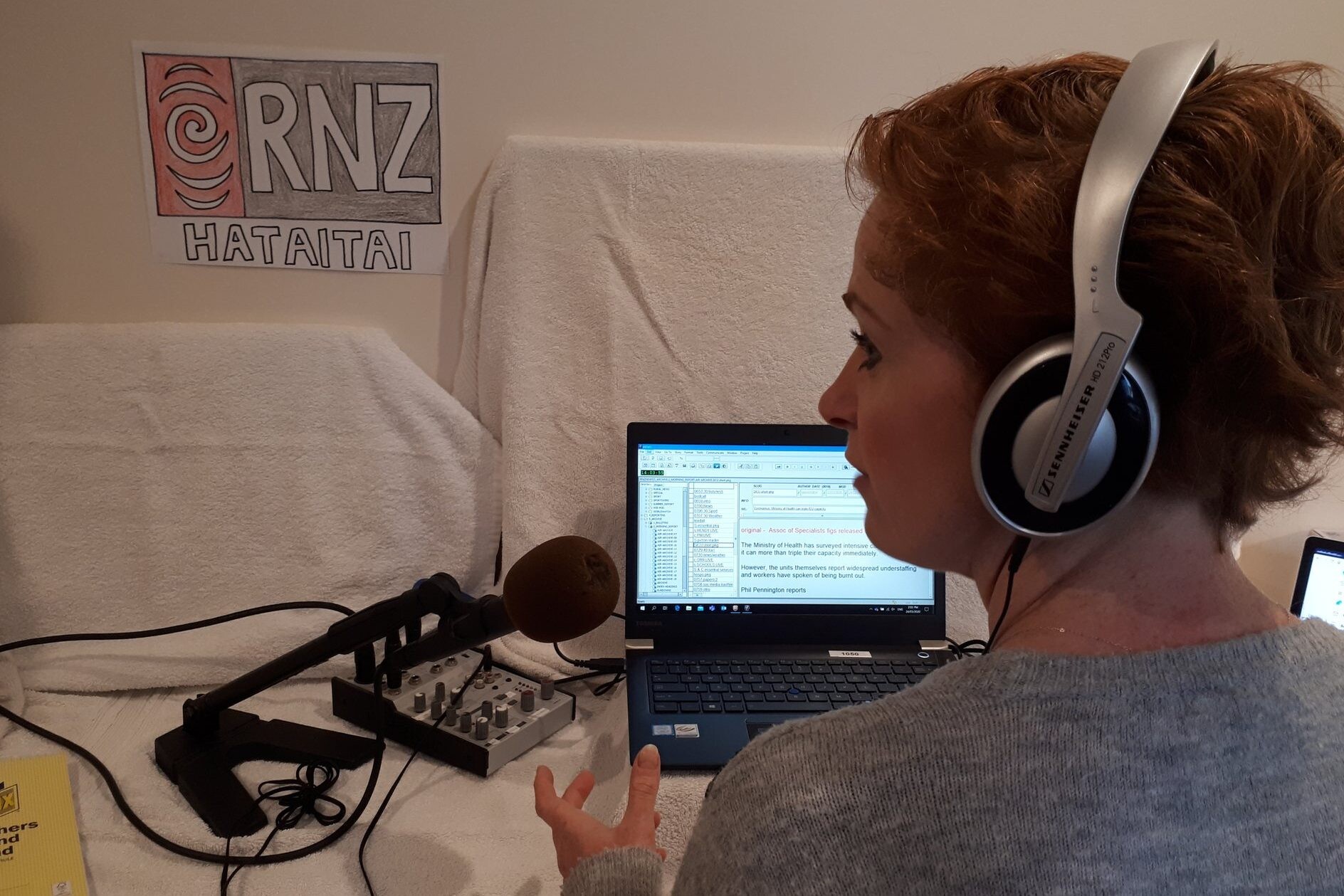It is vital that journalists are free to safely report on protests. But amidst the challenges of reporting protests during a global pandemic, there has been a spike in the number of attacks on reporters and media workers by police and security forces.
Updated: 8 October 2020
We are living through turbulent times. While the world grapples with the implications of COVID-19, protests are taking place around the globe in response to the devastating and deeply alarming death of George Floyd in the United States.
These protests are aimed at the systemic racism and long-standing injustices faced by so many. They were sparked in reaction to the killing of an unarmed black man, George Floyd, by Minneapolis police officers during an arrest on the 25 May.
In democracies, the right to protest, to free expression, access to information and a free press go hand-in-hand. Quality and accurate coverage of protests is vital, not just to spread awareness, but to inform understanding, debate, and accountability.
More resources: Recommended tools and resources for journalists and media workers
Yet these protests, like many others that have taken place in recent months – such as the pro-democracy rallies in Hong Kong – have also involved incidents of violence towards journalists and media workers, particularly by police and security forces.
Latest reported aggressions against the press as of Thursday, Oct. 1
*850+ total press freedom incidents*
116+ arrests
214 physical attacks (152 by law enforcement)
194 rubber bullet/projectiles
99 tear gassings
61 pepper sprayings
90 equipment/newsroom damage
76 other/TBD— U.S. Press Freedom Tracker (@uspresstracker) October 1, 2020
The safety of journalists is paramount and attempts at silencing their coverage or ability to cover events of public interest is a direct threat to media freedom. But journalists and media professionals also face other challenges when covering protests, such as the availability of personal protective equipment, accidental injury and the ethical and editorial decisions of managers and newsroom staff.
Here, the Public Media Alliance team have collated essential resources and guides for journalists and media workers covering protests around the world. These resources are applicable to all protests, with a particular emphasis on coverage during the COVID-19 pandemic.
Featured Resource
Citizen Journalism and Political Protests
Syracuse University
“The field of journalism is rife with risks. Understanding rights, while balancing these risks, can make all the difference to citizen journalists and aspiring reporters.”
This blog from Syracuse University clearly explains the concept of citizen journalism, the role of citizen journalists during protests and the use of their content by the press within the context of recent protests in the USA.
It also offers extremely useful explainers as the the rights of the press during protests, how best for news organisations to build relationships with law enforcement and the use of social media content as news media.
Protest-related safety guidelines
Journalists will often find themselves on the frontline of protest movements. In such situations, journalists are open to direct attacks and accidental injuries, both from protestors and security forces. It is therefore necessary for journalists to understand how they can protect themselves while executing their jobs. We have compiled a list of useful resources for journalists covering protests.
Security Manual for Covering Street Protests
Brazilian Association of Investigative Journalism
From tips on pre-departure risk analysis to ways to ensure one’s physical and legal protections during the course of a protest, the Brazilian Association of Investigative Journalism has provided a useful security manual for journalists covering street protests. The full manual is available in English, Portuguese, and Spanish.
CPJ Safety Advisory: Covering U.S. protests over police violence
Committee to Protect Journalists
With this resource, the Committee to Protect Journalists (CPJ) provides a specific safety advisory to journalists covering the US protests resulting from the May 2020 death of George Floyd.
Physical safety: Civil disorder
Committee to Protect Journalists
This safety note from the Committee to Protect Journalists focuses on general considerations for covering civil disorder.
Physical safety: Solo reporting
Committee to Protect Journalists
Working alone places journalists in a vulnerable position and, recognising this, the Committee to Protect Journalists have provided this safety note for a journalist’s physical safety while they report solo. This safety note may be particularly useful for smaller news organisations who may have limited manpower or citizen journalists who typically cover assignments alone.
How to Safely Cover Street Protests
Dart Center
In this article, the Dart Center for Journalism & Trauma explains how journalists can safely cover street protests.
Tips for staying safe while covering violent protests
International Journalists’ Network
This International Journalists’ Network article touches on the risks journalists face while covering violent protests along with some safety basics. The article also provides a list of additional resources on journalist safety.
How to protect yourself while covering protests
International News Safety Network
The International News Safety Network (INSN) has provided practical advice on how journalists can protect their device and data; physical safety; and legal rights along with the identities of individuals.
Are you a journalist covering a protest? Find quick resources to keep you safe
Internews
Internews have compiled their own list of protest reporting resources for journalists and media workers, which includes mobile phone, digital and physical security.
Practical advice for covering high conflict news stories
National Press Photographers Association
This 2015 guide published by the National Press Photographers Association offers useful tips on how journalists can navigate legal contexts when covering high conflict news stories. This guide provides advice on arrests, detainments, and the protection of images and recordings, along with other legal issues.
23 guidelines for journalists to safely cover protests
Poynter
Poynter has provided tips, additional resources, and a printable guide on how journalists can safely cover protests.
Safety Guide for Journalists
Reporters without Borders
Reporters without Borders has a comprehensive safety guide (published in 2015) for journalists. There are sections in this guide which are relevant for covering protests/demonstrations (such as section 6 of chapter 3). There are also useful sections for managers to consider if they are sending journalists abroad to cover protests (see chapter 2, for example).
Women in Journalism
The Coalition for Women in Journalism has compiled useful information for journalists covering the recent US protests, with a focus on female journalists. This compilation includes safety guidelines, an infographic, and additional resources from other organisations.
Health and safety protocols during Covid-19
The protests that are taking place across the world are also in the backdrop of a global pandemic, adding to the burden for journalists’ safety. From maintaining social distancing rules to protecting and sanitising equipment while out in the field, some of the following resources may be useful for journalists covering protests amid the Covid-19 pandemic.
Advice for media covering COVID-19
Australian Broadcasting Corporation
ABC Australia’s International Development department has made their guidelines and support available for keeping journalists safe while reporting on the Covid-19 pandemic. These include reporting in the field as well as emergency broadcast guidelines.
Covid 19 News Organizations Safety Protocols
Acos Alliance
This is a collaborative document produced by ACOS Alliance signatories such as Article 19, Reporters Without Borders, and the Committee to Protect Journalists for working with freelancers. This resource aids newsrooms in creating and adapting safety practices in response to the COVID-19 pandemic, with a focus on freelance commissioning.
The ACOS Alliance has also put together a list of Covid-19 Resources covering safety protocols, webinars, ethics, and mental health wellbeing. ACOS Alliance also provides a resources’ hub for further access.
CPJ Editors’ checklist: Preparing for COVID-19 assignments
Committee to Protect Journalists
This checklist is designed especially for newsroom editors and commissioners to consider how well-prepared and protected their staff are for setting out on Covid-19 related assignments.
CPJ Safety Advisory: Covering the coronavirus pandemic
Committee to Protect Journalists
From best practice for equipment cleaning and digital security, to avoiding infection and wearing personal protective equipment (PPE), CPJ’s extensive safety advisory includes protocols that journalists can follow for “staying safe in the field”. This guide is available in over 15 different languages.
Ensuring safety of field reporters covering COVID-19
WAN-IFRA
WAN-IFRA has pulled together the key points from a recent webinar held on ensuring the safety of journalists in the field, in the backdrop of the global pandemic. “We have to conduct the same planning and risk assessment as we would if we were going into a war zone, covering a natural disaster or a violent protest” said Roger Renni, Director and Senior Security Consultant at Key Objectives. Alongside physical safety, such as maintaining social distancing rules and use of transportation, expert advice also considers managing mental health.
Free Press Unlimited Emergency Support for Journalists (Funding opportunity)
Free Press Unlimited
“To help reporters under threat, Free Press Unlimited has launched Reporters Respond. This international emergency fund provides direct assistance to journalists and media outlets, enabling them to resume work as quickly as possible when faced with a crisis situation. Short-term support is provided irrespective of the medium and the area covered by the journalist or outlet.”
[Text sourced from FPU]
How can journalists protect themselves during the Covid-19 pandemic?
IJNET
IJNET offers guidelines for on-the-ground reporting, which include opting “for places with low foot traffic” and wearing PPE such as a surgical face mask “when interviewing random people on the streets”.
Medical, Digital, and Legal Safety Tips for Journalists Covering the Pandemic
GIJN
GIJN highlights some key lessons learnt and challenges that journalists might face while reporting on a global pandemic, such as intimidation and censorship as well as government repression.
Reporting on COVID-19: SAFETY
Thomson Foundation
The Thomson Foundation has designed a free online course for journalists to provide additional training for reporting on Covid-19 safely, in collaboration with the International Federation of Journalists (IFJ) and the Dart Centre Europe.
Safety guidelines for journalists reporting on COVID-19
UNICEF
UNICEF has produced a “set of safety guidelines issued for all journalists who may be more vulnerable to contracting COVID-19.”
Strategies for Safely Covering Protests
IWMF
This webinar, hosted by the International Women’s Media Foundation (IWMF) and the Committee to Protect Journalists (CPJ), discusses strategies for how journalists can stay safe while covering protests. The webinar’s conveners, journalist safety experts Jean-François Belzil, Alison Baskerville, and Colin Pereira also highlight how to prepare for and react to threats journalist may face against their physical safety.
Your safety as a journalist reporting COVID-19
Internews
This Internews guide provides a number of considerations for reporters going into the field to cover Covid-19 developments. It also includes a risk assessment before the assignment. Internews follows the basic principle: “First do no harm”.
More tools and guidelines for safe reporting during the Covid-19 pandemic can be found on our Coronavirus resources and best practices page.
Header Image: 2020.05.31 Protesting the Murder of George Floyd, Washington, DC USA 152 35046. Credit: Ted Eytan/Creative Commons
Related Posts
2nd June 2020
The Public Media Alliance condemns attacks on journalists and media workers during protests in the USA
As Black Lives Matter protests spread…
15th May 2020
Assistance and best practices for remote broadcasting during COVID-19
As many journalists adapt to working…


